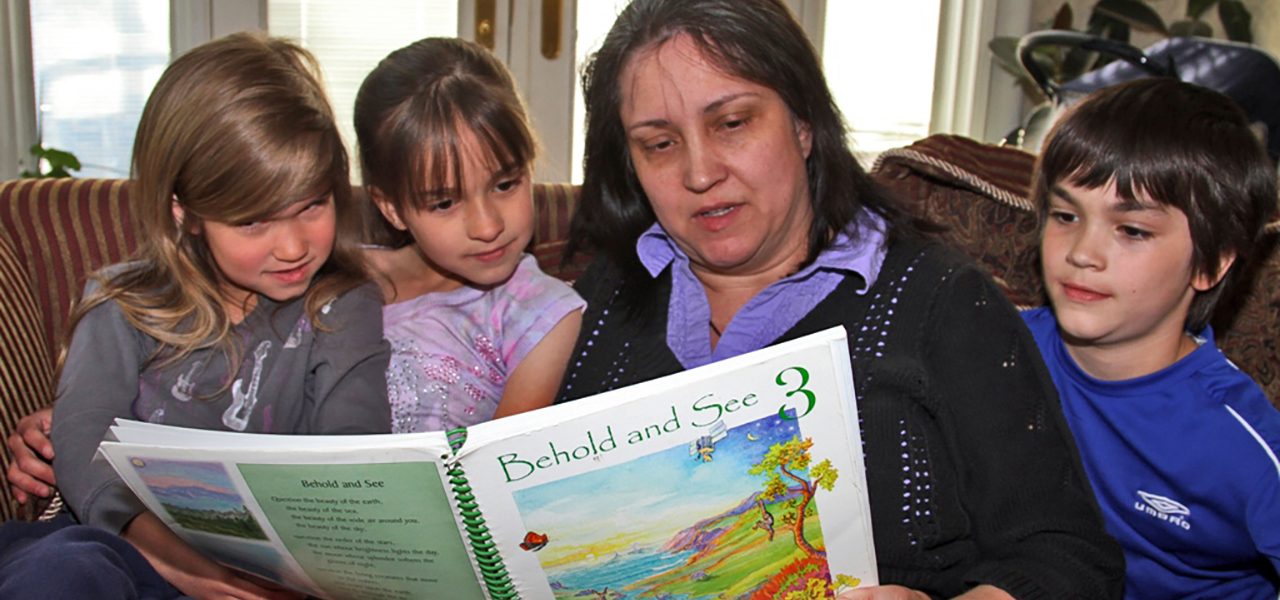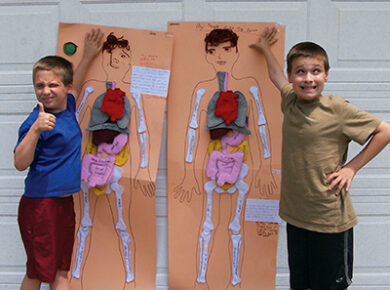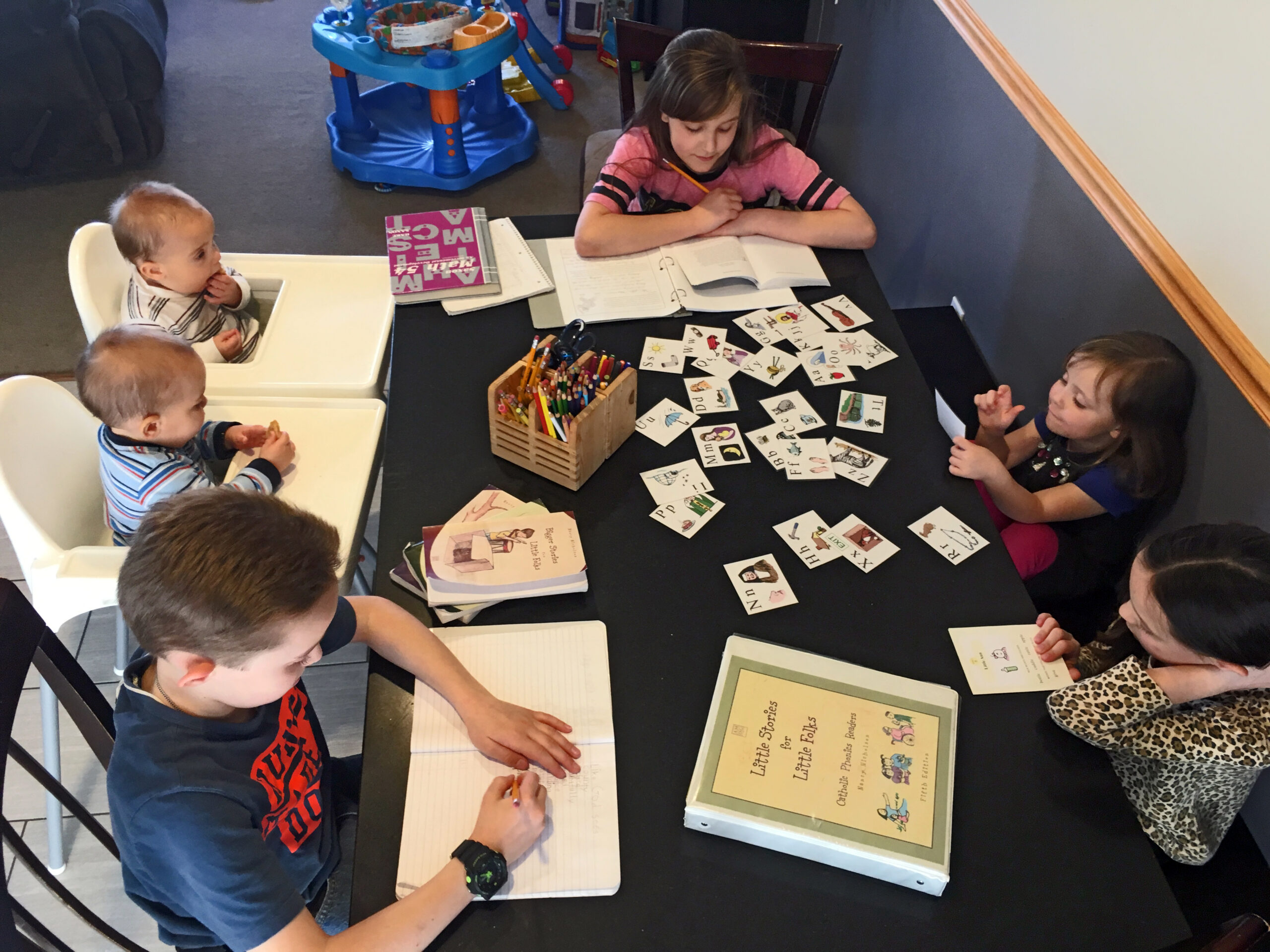The Schoolhouse Method: Homeschooling Multiple Children Together

The “schoolhouse method” describes the practice of teaching multiple children of different levels using the same materials. For instance, someone using the schoolhouse method might teach science to a second grader, fifth grader, and seventh grader at the same time, using the same science program.
Usually, the schoolhouse method is used for subjects like science, history, literature, and art. The schoolhouse method is not recommended for skill-based subjects such as math, reading, spelling, and grammar since students need to learn these subjects in order without missing any educational steps.
The schoolhouse method works well for many families, but it’s important to consider the potential drawbacks before deciding what is best for your family. Here’s a closer look at different aspects of the schoolhouse method.
Is the schoolhouse method really easier?
The schoolhouse method can be appealing at first because it seems easier than teaching each child separately. But depending on your children’s independent learning skills, the schoolhouse method can actually require more time and effort.
It’s true that teaching a single 30-minute science class to four children is easier if the alternative is teaching a separate 30-minute science class for each child. But that isn’t usually how science and history are taught in the homeschool, at least not for CHC families. CHC’s texts and workbooks are designed to be “self-teaching,” which means that after a brief introduction to the lesson, children can sit down and learn the material independently.
For example, Emily from Ohio shares, “CHC books have allowed my kids to keep moving on their schoolwork during a very stressful 6 months with illness in the family, dad out of town, an unexpected move, two long-distance car trips, home renovations, and Christmas; not to mention with overwhelmed and overtaxed parents! They get out their books and work on their own without being told. It is such a weight off our minds. I’ve been tremendously grateful for your curriculum!”
So when it comes to comparing the schoolhouse method with the alternative of teaching children individually, it is more accurate to ask, “Is it easier to teach a 30-minute science class to four children, or to be available for questions while my four children study their individual science books on their own?”
Which is better for academic achievement?
Another factor to take into consideration is whether the schoolhouse method is as academically sound as teaching children separately. The schoolhouse method can definitely provide a good education. Still, children will usually learn more if they study age-specific materials.
A curriculum designed for a broad range of ages, such as a four-year cycle, generally presents mid-level content in words that younger students can understand; but often, the content is not suited to the interests and needs of older or younger students. Younger learners may not get a good foundation in the basics, while older learners may not learn the advanced vocabulary and concepts that they should.
Typically, a four-year cycle is completed two or three times by each student (depending on whether it is used in high school or not), with the assumption that students will grasp more and more on the second and third use of the same material. But using the same texts each time—the same material presented in the same way—greatly limits the depth and breadth of what students learn. Materials designed for broader age groups simply cannot target the specific needs of all age groups at the same time because students need different things at different ages–such as different levels of complexity or different focuses.
It can also be challenging to hold the attention of all the students at once, since young learners do not have the background to appreciate the material and older students have already studied the topic four years earlier. Parents must rely more on age-specific activities and projects to engage their learners at different ages. This is especially the case if some of the students have already learned the material once and are on their second or third time through the program. The customization required to adapt the material to the students’ needs takes time and effort that would not be necessary if each child was learning from age-appropriate material.
Which is better for family harmony?
When it comes to family harmony, the positives and negatives of the schoolhouse method really depend on your unique family dynamic. An issue you may face with the schoolhouse method is that some children have a harder time taking ownership of their learning when they are put on the same level as an older or younger sibling. The older sibling may feel he has to compete with the younger student to prove his maturity, and the younger sibling may struggle to keep up with his big brother or sister, instead of enjoying what he’s learning for its own sake. Keep in mind that this may not be a problem for all children or all subjects.
On the other hand, the schoolhouse method allows for great discussions since the whole family is learning the same material at the same time. You can plan family projects, outings, and even meals around what you’re learning to create a more immersive experience.
What does CHC recommend?
CHC materials are age-targeted and designed to be used in sequence so the child’s understanding builds progressively. CHC has carefully created each grade level’s material to challenge and appeal to the student at a unique stage of his development. Each level offers unique opportunities for understanding and thoughtfully builds on the previous levels to ensure that the student always has a solid foundation for what he is learning.
Rather than getting all your students together for their lesson, stopping to explain concepts too complicated for the younger ones, and detouring at other times to provide adequate “meat” and depth for the older students, you can provide each child with the book best suited to their level and watch them all hum along. And the suggested activities included in CHC’s curricula makes it easy for siblings to share what they’re learning and have constructive fun with each other.
Of course, find what works best for your family. Not all children have the independent learning skills to work on their own, and some students need additional help for other reasons, such as learning disabilities. If you have to decide between teaching grades together or dropping the subject, by all means, teach them together!
The photo at the top of this article was submitted by Dottie from Ohio.
Related Blogs
If you enjoyed this article, you might be interested in the related articles below.
Favorites
Explore CHC’s top favorites! From art to literature, science to hands-on religion, CHC has materials to enrich every Catholic homeschool.

















